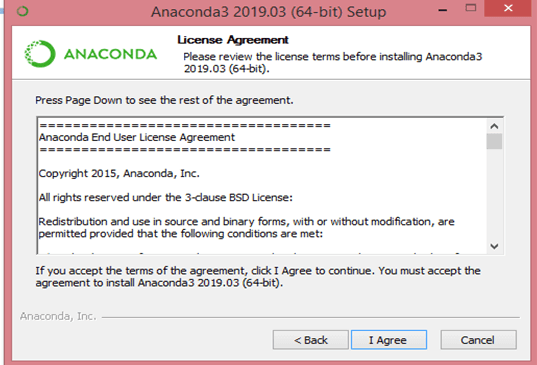

- #Anaconda vs python numpy install#
- #Anaconda vs python numpy 64 Bit#
- #Anaconda vs python numpy code#
#Anaconda vs python numpy install#
This allows you to use Python external functions, post calculation actions, user defined results and curvilinear constraints without having to install a Python distribution separately.īecause the pip module is included it is possible to install modules from PyPI to this distribution. If you choose to install this embedded Python distribution whilst installing OrcaFlex, then this Python distribution will be used by OrcaFlex as its preferred embedded Python. This distribution is based on the embedded package available at with a small number of critical third-party modules included: pip, NumPy, SymPy, PyYAML and OrcFxAPI. Starting with version 11.3, the OrcaFlex installation program can install an embedded Python distribution. Pre-processing and post-processing are the primary examples of non-embedded usage.
#Anaconda vs python numpy code#
Non-embedded Python is the reverse scenario where the Python executable is the main process, and it uses the OrcFxAPI module to call OrcaFlex code in the OrcFxAPI DLL. Python external functions, post calculation actions, user defined results and curvilinear constraints. By embedded Python, we mean Python code that is called by OrcaFlex (or by the OrcFxAPI DLL), e.g. In the following we talk about embedded Python and non-embedded Python.
#Anaconda vs python numpy 64 Bit#
OrcaFlex versionĪlthough 32 and 64 bit versions of Python are supported we would recommend using the 64 bit version.

The Python interface to OrcaFlex requires Python version 3.6 to 3.11 inclusive, although earlier versions of OrcaFlex support older versions of Python as documented below. To use the Python interface to OrcaFlex you need to install: The second part of this page presents some details of how the interface is accessed, both by the user, and also by OrcaFlex, and again some solutions to typical problems are noted here. We then consider some of the issues that may be encountered during set up.

The Juypyter Notebooks are a great way to keep track of though processes as you're tackling problems.This page first describes a number of options for installation of Python and the Python interface to OrcaFlex. Some background reading may be required but i think most of it is on that page. Here are the docs for using Jupyter with Anaconda. I think it might be a checkbox in the installer? It is possible to have wackiness happen with different versions of python installed all at once, so the uninstalling of python 3.7.4 was good.Īlso I think Anaconda adds itself to the PATH but not sure about that one. So, rather than just installing standard python 3.7.x and then going "pip install pandas" or whatever, you install Anaconda and it brings a whole lot with it, including its own package manager (conda rather than pip) and its own approach to virtual environments (this can be a key bit depending on your use). Mainly numpy, idk if it's still as annoying as it used to be. This is important because some of those packages are a bitch to install sometimes. Importantly, installing anaconda will get you numpy, pandas, sklearn, scipy, jupyter (I think), iPython, and lots more along with the base Python 3.7.x language. Most of these bells and whistles have to do with setting up the Python language for success in a Data Science environment. That is, Anaconda is Python with some bells and whistles. Not an expert but here's some background:Īnaconda is a Python distribution.


 0 kommentar(er)
0 kommentar(er)
